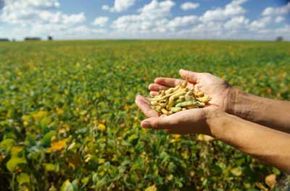What seeds are stored in banks?
A seed bank is only as good as the seeds it houses. Our planet hosts millions of varieties of plant species. Who decides which types of seeds should be stored? All of them? Only the "best" ones? How deep is this library of seeds?
There are about 1,400 seed banks around the world, so which seeds get chosen for storage varies from location to location. Local seed banks may focus on the storage of indigenous wildflowers or specialty vegetables, for example. Other banks have a more global focus. For example, the Global Crop Diversity Trust concentrates solely on a selection of priority crops determined to be the most globally beneficial. These crops include but are not limited to the following:
Advertisement
- Apple
- Banana
- Barley
- Bean
- Carrot
- Coconut
- Eggplant
- Lentil
- Maize
- Oat
- Pea
- Potato
- Rice
- Strawberry
- Sweet potato
- Wheat
[source: Global Crop Diversity Trust]
The Global Diversity Crop Trust works within the framework of a treaty intended to help conserve crop diversity worldwide. This treaty -- The International Treaty on Plant Genetic Resources for Food and Agriculture (PGRFA) -- was ratified by 40 governments in 2004 and established a global system to provide farmers, plant breeders and scientists with access to plant genetic materials, such as seeds [source: PGRFA].
The PGRFA permits access to these seeds for the purposes of research or agriculture, as long as the results are beneficial to all. Under the authority of the treaty, the Consultative Group on International Agricultural Research (CGIAR) holds the collections [source: CGIAR]. The reason all these organizations are necessary is that the task of managing seeds from every single country in the world is a daunting one. But crop diversity cannot be properly maintained unless seeds and plants are collected from different regions.
At these local and international seed banks, do the poisonous plants get a spot? The answer is "yes." Although it may seem dangerous to bank the seeds of poisonous or invasive plants, there's always the possibility of undiscovered uses for a plant. Kudzu, for example, is considered to be one of the most invasive and destructive plants in the southern United States. However, some researchers are starting to look into the feasibility of using kudzu as a biofuel. Is it possible this rapid-growing vine could one day provide clean fuel for our cars? Only time will tell [source: Gjerstad].
Now that we know what types of seeds are stored, let's learn how they are stored and at what temperatures.
